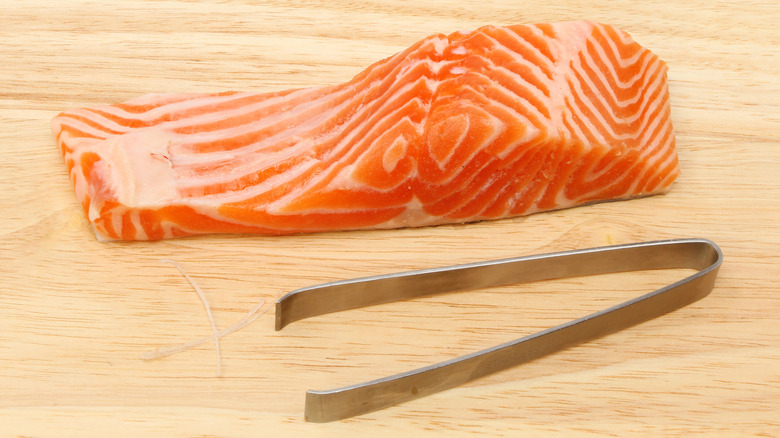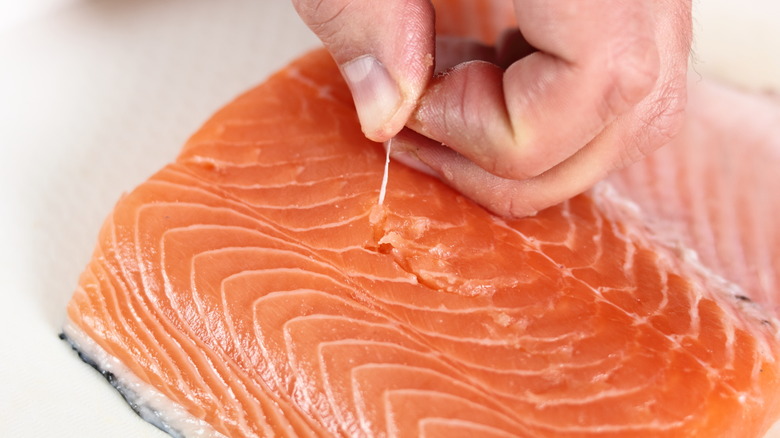The Surprising Tool You Can Use To Debone Fish: UV Light
Whether planning a nice dinner for a classy date or a quick picnic for friends, the process always starts and ends with which ingredients you decide to use. Before you start lighting the candles, pouring the wine, and bringing out the charcuterie board, you have to prepare: and never was there a more tedious method of prep than the deboning of fish.
Although frozen fish usually comes deboned, if you buy fresh from a fishmonger, or from a local market, or you catch them yourself, you'll find that just slapping the salmon, trout, cod, or whatever else onto the grill will not cut it. No one likes to be picking bones out of their teeth.
These "pin bones" that can be found running along the length of the filets are particularly tedious as they are separate from each other and require individual deboning attention. You will have to grab a pair of tweezers and scan every inch of that fish to make sure you pluck every single one of those virtually clear little buggers out.
Pin bones glow when exposed to UV light
Of course it's uncomfortable to be picking pin bones out of your food and definitely not the most flattering to watch, but pin bones can become a real choking hazard. So if it helps you get through the process of picking pin bones, you can look at it like this: deboning your date's salmon filet is the equivalent of saving their life (no guarantee that your date sees it that way though). Thankfully, science and Reddit have your back.
Redditors and a fairly recent study in the Journal of Food Protection have found that fish bones of certain fish — notably cod — glow slightly and visually pop when exposed to ultraviolet light. This tip makes identifying pin bones and the process of deboning particular fish quite a ways easier if done so via UV light.
Per the study, data from fisheries that practiced using UV lights to better identify pin bones revealed that the detection ratio was 90.86%, or 14.08% higher than the traditional candling method. What's more, reddit user u/Picturesonback proves that you can do this UV light-detection trick just as well at home.

